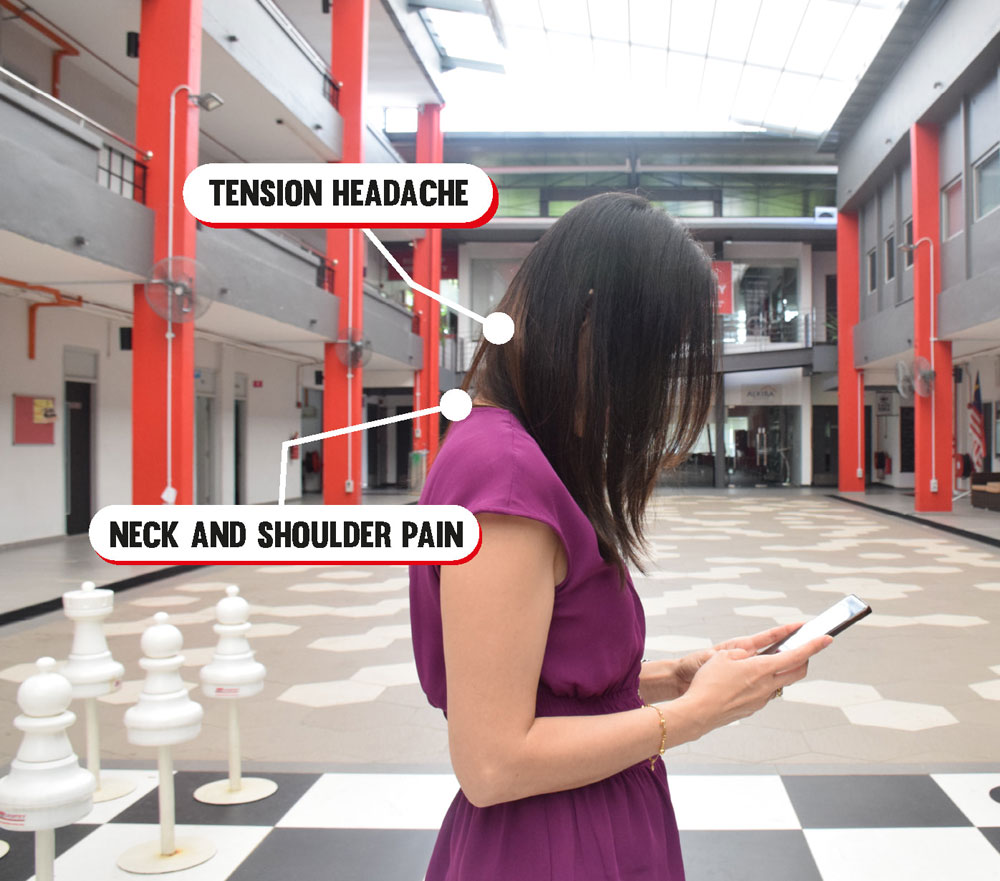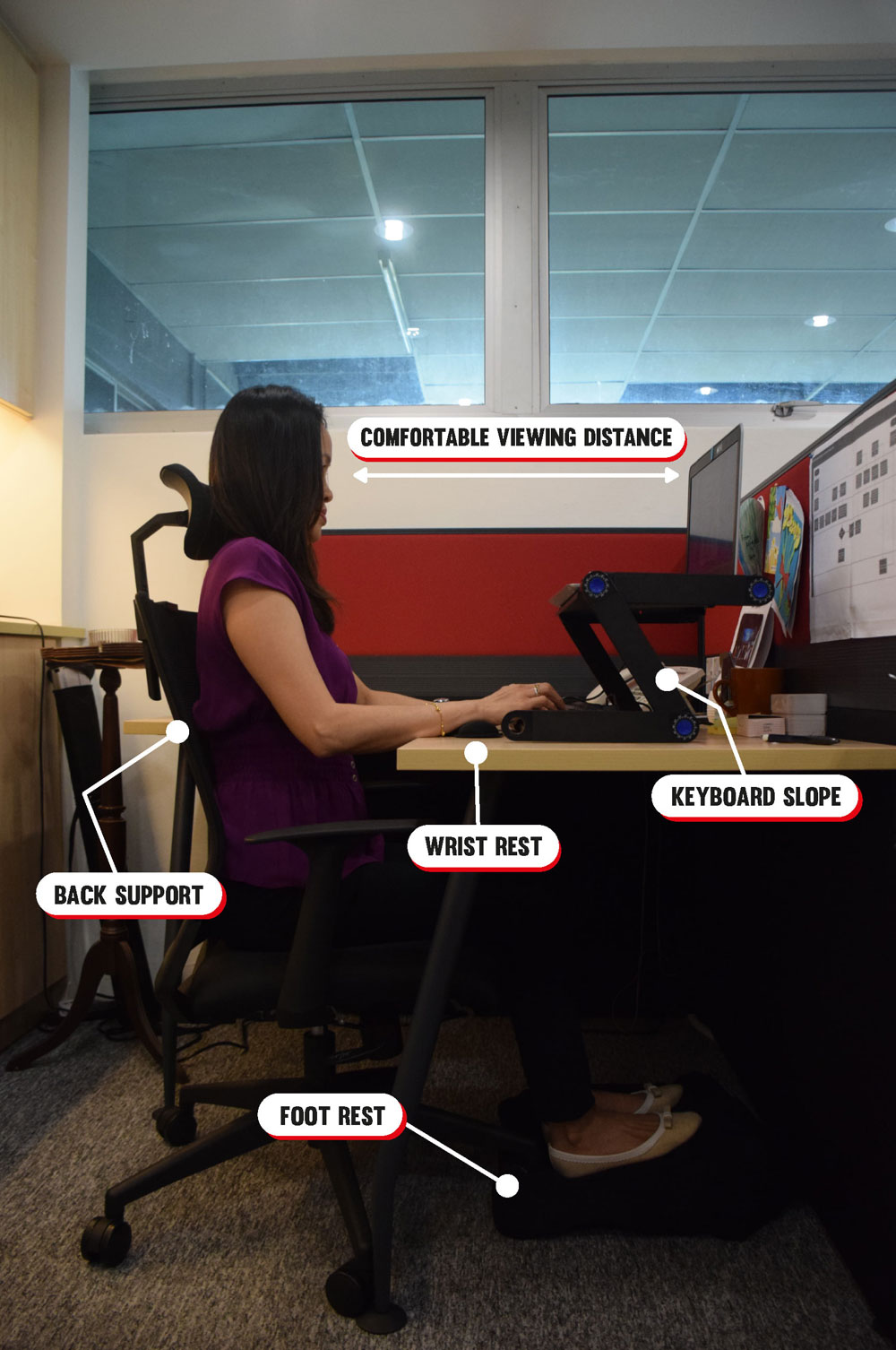In ushering in the new year, many of us will have found ourselves developing new year’s resolutions, be they for improved health, financial stability, or even a better work/life balance. However, given our increased dependency on technological devices in recent times, how many of us are looking into developing correct postures as our resolution?

Lin Jia Huang (second from right), conducted a research on the prevalence of “text neck” with smartphone usage amongst university students in Malaysia
The use of technological devices has become an inevitable part of the 21st century lifestyle and this growing phenomenon has raised concerns particularly surrounding the excessive usage of devices resulting in neck, shoulder, and lower back health conditions.
“Text Neck” pain
The “Text Neck” was coined by US chiropractor, Dr. DL Fishman, who describes “Text Neck” as repeated stress injuries and pain in the neck resulting from excessive watching or texting on hand held devices over a sustained period of time .
In a recent study conducted by Lin Jia Huang, a graduate of the Bachelor of Science (Hons) in Physiotherapy programme from INTI International University (INTI); it was reported that 88.6% of respondents indicated experiencing on and off neck and shoulder pains, and having continuous neck and shoulder aches from the usage of smartphone devices.

People tend to crane forward between 45 to 60 degrees more, and have their shoulders hunched while using their phones
Results from the research also showed that there was a positive correlation between the severity of neck and shoulder aches to the level of smartphone addiction. The research indicated that more than half of the participants used smartphones for more than 6 hours daily and around 81.6% of the respondents used smartphones between 21 to 50 times daily .
Yew Su Fen, President of the Malaysian Physiotherapy Association and an expert in her field for 35 years, states that prolonged wrong postures of the neck when using these devices can lead to very damaging effects to the neck and upper back.
She states, “Our mobile usage has transformed our neck postures and upper back drastically. People tend to crane forward between 45 to 60 degrees more, and have their shoulders hunched while using their phones. When done over a period of time, this posture stresses the cervical spine leading to early wear and tear, and eventually causing pain.”
To mitigate this “text neck” phenomenon, she adds that there are several adjustments we can reflect into our lives.
“The best way to prevent neck aches is to hold our phones 14 to 16 inches away from our eyes (which is the advisable reading distance). We should also have our devices at eye level with our head upright, chin tucked in, and our shoulders in a neutral and relaxed position. Larger fonts are also advisable when using mobile devices.”
Lower Back pain
Apart from mobile devices, computers and laptops play a significant role in our daily routine too. Our interactions with these devices can strain the lower back when we are required to sit for long hours in one position.

A model demonstrating a well-designed workstation and sitting posture to prevent lower back pain
Yew Su Fen shared that about 70 to 80% of the global population will experience low back pain at some point in their life. She adds that back pain has been ranked highest in terms of disability and sixth in terms of overall health burdens by the Global Burden of Disease 2010 study.
Thirumalaya Balaraman, Head of Programme for INTI’s Physiotherapy programme, states that a common reason for adult’s experiencing lower back pain is attributed to how we sit when facing computers.
“Many people have an inclination to lean forward to look at their screens when sitting at their desks. When done over a long period of time, it can impact an individuals’ hip and lower back mobility,” stated Thirumalaya.
To reduce long term injury, Thirumalaya shared how we can design our workstations and correct our sitting postures while at our desk.
“While sitting, we need to ensure that there is sufficient back support that will enable us to sit upright comfortably and that there is a comfortable viewing distance from our chairs to our screens that will prevent us from leaning forward. We should also ensure that our feet are rested on an inclined foot rest to prevent excessive stress on our lower backs,” shared Thirumalaya.
Given that technology is here to stay, applying these minor adjustments to our daily routines could very well keep the doctor (and their bills) away.